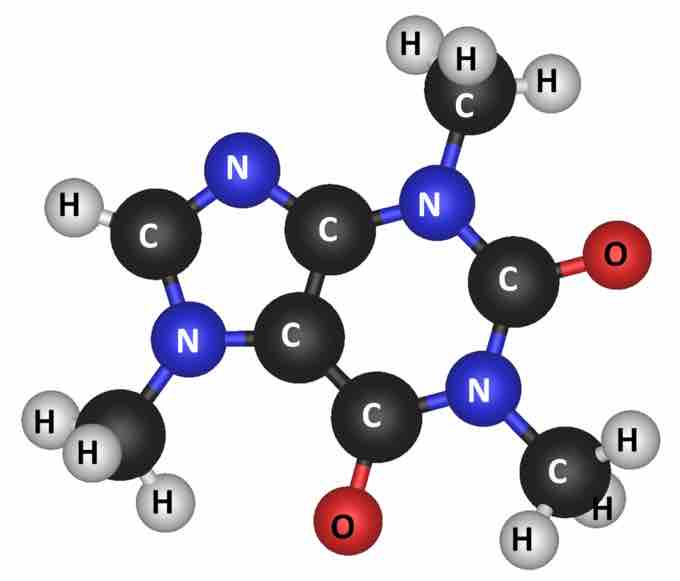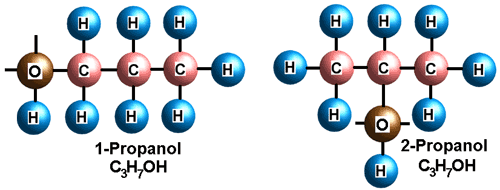Atoms and Molecules
An atom is defined as a basic unit of matter that contains a centralized dense nucleus surrounded by an electron cloud. When two or more atoms are held together by a chemical covalent bond, this new entity is known as a molecule. The word "molecule" is a loose term, and it colloquially carries different meanings across different fields of study. For example, the term "molecules" is used in the kinetic theory of gases, referring to any gaseous particle regardless of its composition.
Most often, the term "molecules" refers to multiple atoms; a molecule may be composed of a single chemical element, as with oxygen (O2), or of multiple elements, such as water (H2O). Molecules are neutral and carry no charge; this property distinguishes them from polyatomic ions, such as nitrate (NO3-).

caffeine molecule
Caffeine is a complicated molecule, composed of many atoms bonded to each other in a specific arrangement.
Molecular size varies depending on the number of atoms that make up the molecule. Most molecules are too small to be seen with the naked eye. The smallest molecule is diatomic hydrogen (H2), with a bond length of 0.74 angstroms. Macromolecules are large molecules composed of smaller subunits; this term from biochemistry refers to nucleic acids, proteins, carbohydrates, and lipids. Some macromolecules may be observed by specialized microscopes.
Often, a compound's composition can also be denoted by an empirical formula, which is the simplest integer ratio of its constituent chemical elements. However, this empirical formula does not always describe the specific molecule in question, since it provides only the ratio of its elements. The full elemental composition of a molecule can be precisely represented by its molecular formula, which indicates the exact number of atoms that are in the molecule.
Example:
- C6H12O6 = molecular formula for glucose
- CH2O = empirical (simplified ratio) formula for glucose
Isomers
Isomers are molecules with the same atoms in different geometric arrangements. Because of these different arrangements, isomers often have very different chemical and physical properties. In the picture below, 1-propanol is mostly used in the synthesis of other compounds and has a less offensive odor, whereas 2-propanol is the common household alcohol.

propanol structural isomers
The chemical formula for propanol (C3H7OH) describes several different molecules, which vary by the position of the alcohol (OH). Each molecule is a structural isomer of the other.